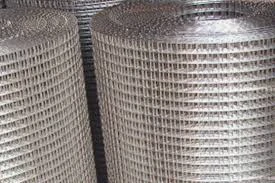Nov . 20, 2024 09:00 Back to list
barbed wire fences
The Role and Importance of Barbed Wire Fences
Barbed wire fences have been an integral part of agricultural and property management since their invention in the late 19th century. Originally designed to contain livestock and delineate property boundaries, these fencing systems have evolved into multifunctional barriers essential for modern agriculture, security, and land management.
Historical Context
The first patent for barbed wire was filed by Joseph Glidden in 1874. Before its introduction, wooden fences were the primary means of enclosing land, but they were costly and labor-intensive to maintain. The innovation of barbed wire, with its sharp, protruding spikes, offered a more efficient and economical solution. It quickly gained popularity, particularly in the vast expanses of the American West, where vast ranches necessitated a reliable method of keeping cattle and other livestock contained. By the late 19th and early 20th centuries, barbed wire had transformed agricultural practices, allowing farmers to establish clear boundaries and protect their animals from wandering off or being stolen.
Construction and Variations
Barbed wire is typically made from mild steel, which is then coated with a protective layer to prevent rusting. The wire itself consists of a core wire from which sharp barbs extend at regular intervals. These barbs can vary in shape and size, depending on the intended application. There are different types of barbed wire, including single-strand, double-strand, and even high-tensile varieties designed for specific fencing needs.
In addition to traditional agricultural uses, barbed wire has also found applications in industrial settings, such as in military installations and prisons, where security is paramount. In these contexts, the wire acts as a deterrent against intruders, making it more difficult for unauthorized persons to breach a perimeter.
Benefits of Barbed Wire Fences
barbed wire fences

One of the primary benefits of barbed wire fences is their effectiveness in keeping livestock contained. Designed to withstand harsh weather conditions and physical pressure, barbed wire fences are durable and require minimal maintenance compared to wooden or other types of fencing. This makes them an economic choice for farmers and ranchers who need a reliable barrier without the excessive expenditure on materials and labor.
Furthermore, the visual nature of barbed wire serves as a psychological barrier. The sight of a barbed wire fence can deter potential trespassers or vandals, as it conveys a clear message about the intention to secure the property behind it. For landowners, this not only protects their livestock and property but also minimizes legal disputes regarding land boundaries.
Environmental Considerations
While barbed wire fences have many practical benefits, they also come with environmental considerations. Wildlife can be negatively impacted by barbed wire, particularly in regions where animals such as deer or coyotes may become entangled in the wires. As awareness of these issues has grown, many landowners are adopting measures to mitigate such risks, including using wildlife-friendly fencing designs that minimize the risk of animal injury and death.
Recent developments in fencing technology also highlight a movement towards more sustainable practices. For instance, some manufacturers now offer barbed wire made from recycled materials or with reduced environmental footprints. These innovations aim to balance the necessity of effective fencing with a growing commitment to environmental stewardship.
Conclusion
In conclusion, barbed wire fences continue to play a crucial role in modern agriculture, security, and property management. While their use dates back to the 19th century, advancements in materials and design reflect a commitment to evolving with society’s needs. As landowners and farmers seek to protect their livestock and delineate their properties effectively, barbed wire remains an enduring symbol of both utility and resilience in the face of changing landscapes. Balancing functionality with environmental responsibility will be key in shaping the future of fencing solutions, ensuring that barbed wire can coexist harmoniously with the ecosystems it intersects.
-
The Role of Field Wire Fence in Grassland Conservation
NewsJul.15,2025
-
Stainless Steel Razor Wire Durability in Coastal Environments
NewsJul.15,2025
-
Enhancing Home Security with Mesh Fences
NewsJul.15,2025
-
Diamond Mesh Wire for Small Animal Enclosures
NewsJul.15,2025
-
Common Wire Nail Tensile Strength Testing for Woodworking
NewsJul.15,2025
-
Barbed Wire Corrosion Resistance Galvanization Techniques
NewsJul.15,2025









